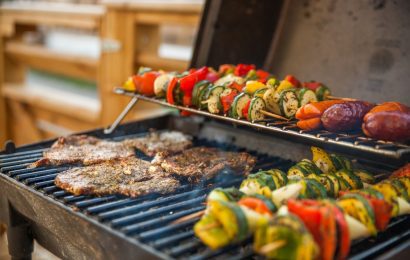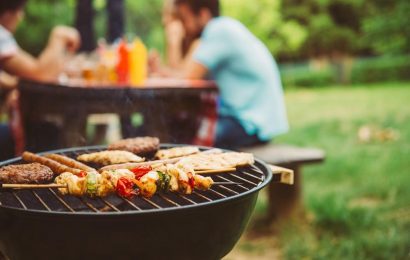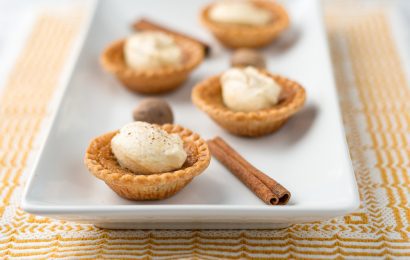Herbs and spices are a healthy cook’s best friend. They are excellent for enhancing the flavor of food without the addition of extra fat, sugar, or salt. But herbs and spices have other benefits, as well: They exhibit antimicrobial (germ-killing) properties, act as antioxidants, and may help prevent or decrease the spread of cancer. For centuries, they have been used for medicinal purposes in addition to food flavoring and preservation. The use of herbs, which typically come from the leaves of plants, has been traced back to the BC era. Spices, which come from the bark, fruit, stems, roots, buds, berries, or seeds of plants, started to be used widely around the second century AD. Centuries ago, people thought that herbs and spices had certain properties that benefited health. Today, scientists have uncovered just how healthful many herbs and spices are.
In one study, researchers at the U.S. Department of Agriculture examined the antioxidant activity (the ability to protect cells against the effects of free radicals, unstable molecules that result from the breakdown of food, exposure to pollutants, or UV light) of fresh herbs grown in a garden at the Agricultural Research Service. They found that each of the herbs tested had greater antioxidant activity by weight than berries, fruits, or vegetables. According to this study, just one tablespoon of fresh oregano has the same antioxidant power as a medium-size apple. How do other herbs stack up? Three tablespoons of dill, 4 1/2 tablespoons of thyme, 7 tablespoons of sage, and 8 tablespoons of parsley all have the antioxidant potential of that medium-size apple. In addition to their antioxidant capabilities, several herbs — as well as some spices — act as antimicrobial agents in food. Clove, cinnamon, thyme, oregano, and rosemary are well known for their antimicrobial properties.
Other studies have found myriad benefits from specific herbs and spices. For instance, populations that regularly consume garlic and spices have a decreased risk of gastric cancer; cinnamon may lower blood glucose levels and improve insulin sensitivity (although this finding is disputed); and capsaicin, the hot component of chili peppers, may inhibit prostate cancer growth. In addition, ginger, which is a long-standing treatment for nausea and vomiting, may also act as an anti-inflammatory agent and has been shown in animal and cell culture studies to decrease the incidence of some types of cancer. While no one knows the optimum doses of herbs and spices to achieve these benefits, it is reasonable to conclude that as with fruits and vegetables, regular consumption is best — but any amount is better than none at all.
In addition to the aforementioned health benefits of herbs and spices, marinating meat, pork, poultry, and fish in a marinade that is rich in herbs and spices prior to grilling may decrease the formation of heterocyclic amines (HCAs), cancer-causing compounds that are produced in meat cooked at high temperatures. You can make your own marinade from any combination of the following: oregano, red chili pepper, garlic, turmeric, ginger, cinnamon, rosemary, and thyme. (Other tricks to decrease the formation of HCAs include cooking your meat longer at a lower temperature or starting to cook it in the microwave and then transferring it to the grill; not allowing meat to blacken or char; and wrapping meat in foil for grilling.)
Shopping and storing
Many people enjoy the taste of fresh herbs in cooking. For the freshest herbs, try growing your own — either in a garden, in large pots outdoors, or indoors near a sunny window. Most herb plants require at least six hours of sun a day. If growing your own isn’t an option, many supermarkets carry fresh cut herbs, such as parsley and cilantro, in or near the fresh vegetable section. Fresh herbs can be stored in an open or perforated plastic bag in the refrigerator for a few days. (Another option is to rinse and dry them, wrap them loosely in a paper towel, and store them in a closed plastic bag in the refrigerator’s crisper.)
To make fresh herbs last up to one week, trim the stems and place the herbs in a jar or vase with water in it, then loosely cover the leaves with a plastic bag and store the jar in the refrigerator. Change the water daily.
Fresh herbs that will not be used within a few days can also be rinsed, dried, chopped (or left whole), and frozen in plastic bags for later use. Fresh herbs can also be dried for later use. A simple drying method is to hang small bunches of fresh herbs in a dry, well-ventilated area out of direct sunlight. Use cotton string or small rubber bands to hold the bunches together. Herbs should dry in 10–14 days using this method; they are done when a leaf rubbed between your fingers crumbles easily. The dried herbs should be stored in tightly closed glass jars in a cool, dark place.
Another way of drying fresh herbs is in the microwave oven. Place two layers of paper towel on the bottom of the microwave, add a layer of herbs, and cover with two more layers of paper towel. Run the microwave on high for two minutes, then check the herbs for dryness. If they are still moist, move the herbs around, run the microwave for another 30–60 seconds, and check again. Repeat until the herbs are dry.
Some stores now sell chopped fresh herbs in convenient, squeezable tubes. (Gourmet Garden is the main brand that is sold widely.) These should be located in the same section of your grocery store as conventional fresh herbs. Squeezable herbs contain some ingredients besides herbs, so read the label to make sure a product is acceptable to you. Squeezable herbs last for three months in the refrigerator or six months in the freezer.
Dried herbs are widely available in grocery stores. The shelf life of dried herbs depends on the herb and how it is stored, but generally, if a small amount of dried herb crumbled in the palm of your hand has very little odor, it will have very little taste and should be replaced.
Spices retain their flavor for longer than dried herbs, and whole spices have a longer shelf life than ground spices. To test the potency of a ground spice, shake the jar, let the contents settle, then give it a sniff. Spices with no aroma should be replaced; if there is some aroma but it’s not as strong as you think it should be, try using a little more of the spice than the recipe calls for.
The flavor of whole spice seeds is intensified if they are toasted first in a dry skillet over medium heat. Toast just until you can smell the seeds, being careful not to burn them. Use toasted seeds whole, or grind them in a spice mill or coffee grinder.
Fresh ginger, garlic, and hot peppers
Ginger, garlic, and hot peppers are versatile ingredients that can easily be used fresh on a regular basis. While often referred to as gingerroot, ginger is, in fact, the rhizome of its plant. Fresh ginger adds a spicy, slightly hot taste to a variety of dishes. It is widely used in Asian cuisines, and it is a popular flavoring for stir-fries. Fresh ginger should be off-white or buff-colored, have a smooth skin, and feel heavy and firm to the touch. To cook, first peel off the thin outer skin, then slice, mince, or grate the ginger as called for by the recipe. To store fresh ginger, place it in a plastic bag with a paper towel (to absorb any moisture) and refrigerate.
Garlic is neither an herb nor a spice, but it is used much like one for flavoring foods. Fresh garlic can enliven almost any dish. It has a sharp, sometimes overpowering flavor when used raw, but a more delicate flavor when cooked. A head of garlic should feel firm and exhibit no sprouting; if not used right away, it should be stored in a cool, dark, dry place. Cloves of garlic must be peeled before most uses; they are easier to peel if they are first crushed slightly with the side of a knife. Garlic can be minced with a knife or crushed in a garlic press or with a mortar and pestle for use in recipes. Whole cloves or even entire heads of garlic can be roasted in the oven, either unpeeled and coated lightly with oil or peeled and in the juices of meat or poultry being cooked (with vegetables, if desired). The garlic can then simply be served whole or puréed and mixed into a sauce for the meat. To add a light garlic flavor to sautéed spinach or other vegetables, spear a lightly crushed, peeled clove of garlic with a fork and rub it in the heated oil to be used for sautéing.
Hot peppers, also called chili peppers, are featured in the cuisines of many different countries. (For a list of how other herbs and spices match up with different cuisines, see “Seasonings By Cuisine.”) Fully ripe, they are either red or yellow; before this, they are green (both ripe and unripe peppers are used in cooking). Popular pepper varieties include, from less to more hot, banana, poblano, jalapeño, serrano, and cayenne. Pepper hotness can also vary widely within a variety. For most recipes, hot peppers need to have their seeds and ribs removed (some recipes also require removing the skin). Seeding a pepper involves slicing it in half and using a spoon or sharp knife to scrape off the seeds and ribs. Since the substance in peppers that gives them heat, capsaicin, can be painful if it gets into the eyes or nose, it is a good idea to wear gloves when handling them. Cooking a dish with hot peppers in it for a longer duration increases the hotness of the dish.
Cooking with herbs and spices
In cooked dishes, fresh herbs fare best when they are added toward the end of cooking, though parsley can be added at any time. In dishes that are not cooked, however, such as dips or spreads, fresh herbs may need some time to release their flavors. Dried herbs and spices should be added toward the beginning of cooking.
If substituting fresh herbs for dry, you will need two to four times the amount of fresh herbs to get the same amount of flavor as you would from dried herbs. In other words, if your recipe calls for 1 teaspoon of dried basil, use 2–4 teaspoons of fresh basil.
Spice things up
Scientists say that more research is needed to know the quantities of herbs and spices needed for specific health benefits. But more research is typically needed to nail down how food, supplements, and food components (such as antioxidants) work; this does not mean the benefits are not real. One thing is certain: Herbs and spices can enliven a dish tremendously, and incorporating them into dishes tends to lower the amount of sodium, sugar, and fat needed for full flavor. So while scientists continue to examine the health benefits of herbs and spices, start spicing up your dishes now, and enjoy the flavors of your food along with the peace of mind that comes from doing something good for your body. For ideas on how to incorporate more herbs and spices into the foods you prepare, see “Do Try This At Home.”





